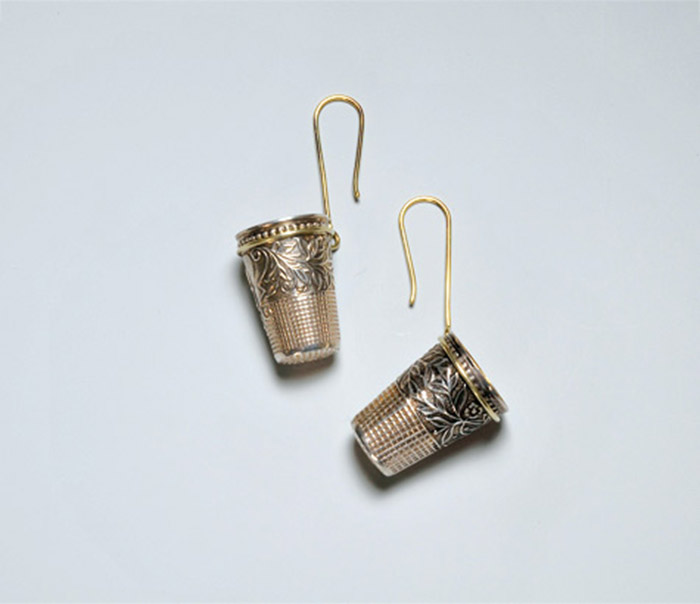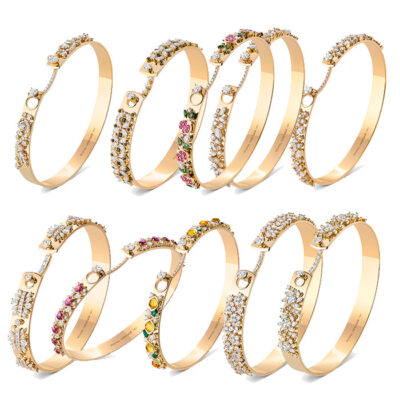Style
25 September 2017
Share
Monika Brugger: a key figure in contemporary jewelry
The German goldsmith/visual artist has lived in France for over thirty years, yet her conceptual work is little known there. The exhibition at the Mercier Gallery during Parcours Bijoux provides an ideal occasion to discover her.
What’s in the exhibition?
An exhibition is a chance to tell stories and open doors – in short, to see an object in a different light. This is a retrospective showing the links and relationships between my pieces. Some are being exhibited for the first time. I’m very particular about the staging; for me, it’s all of a piece. It’s important that each item is always presented in a context.
You constantly reinvent jewelry … What is your creative approach?
I’m self-taught, and I started to make jewelry quite late on, when I was 33. I wanted to evoke something more than beauty through art. I’m not concerned about materials or techniques. A jewelry piece does not interest me as an object per se but as a social object defining the human being in society. For example, an earring that requires mutilating the body means changing from one state to another. What I find meaningful are ideas and concepts: creating a path that emerges through sudden illuminations, unconscious hidden meanings and discoveries opening out to other worlds. Childhood, memory, femininity, the body and fairytales are all closely linked, interlocking elements, without this necessarily being stated. One work always relates to another.
The brooch is clearly your “thing”.
Not very popular in classical jewelry, it’s a picture with a pin, which you can make with absolutely anything, like a credit card, a packet of chewing gum or a teabag. It’s also the only type of jewelry that needs something other than the body to exist. It confronts the support directly, and dialogues with the fabric.
Some of your best-known pieces are embroidered definitions from various editions of a dictionary, Le Petit Robert …
This series of “Petit(s) Robert(s)” includes a linen shirt exhibited in “Medusa“, embroidered with the definition of the word “broche” (brooch). Moving to France involved changing language, and I was forced to rebuild a vocabulary, my vision of the world, references and so on. My work involves an etymological exploration of the French language, with words I understand perfectly or don’t really grasp. They evoke this forgotten, outmoded know-how, which contributes to a calm mind; or to the process of learning how to write.
Your jewelry is symbolic, meaningful and full of literary references. How should we read “Schmück”?
It all started with the first bleach-splashed dress, when I was on holiday in Switzerland, with no equipment. This is an inseparable triptych of dresses featuring three subverted pieces of jewelry – three pieces that have left an imprint: a red stain embroidered on the white, a burn on the beige, and a splash of bleach on the black. They question the idea of marking and the role of fabric, which represents the body. Everyone can see it as either a work of art or a piece of clothing. I love the sociologist Georg Simmel’s writings on the subject.
Do your pieces always have a message?
Of course not! I also create them just for fun or to chill out, like the series of thimbles reminiscent of little Victorian jewelry pieces, or the series of insect pins I call “éphé-merdes”. You could also pin them to a curtain. I had no ulterior motive for them.
You often refer to three designers little-known in France …
Onno Boekhoudt, Otto Künzli and Manfred Nisslmüller. I love Künzli’s tiny red pins, attached to people entering a gallery as though they are works earmarked for sale. It seems like nothing much, and yet it only works in this precise context. I like the artistic gesture of Manfred Nisslmüller, who just repeats the word “broche” more and more softly until it fades away in a murmur. The quintessence of the conceptual approach.
Your work sells in Germany, Belgium and Switzerland – but rarely in France!
France is not a yardstick for contemporary jewelry, even if it has several big names, like the Chavents, Henri Gargat, Gilles Jonemann and Joël Faivre-Chalon. The French eye is formed by the refined jewelry aesthetic, which I find very boring, because it has no roughness to it. Beauty includes ugliness … Nothing is more beautiful than a flood, if you disregard the suffering it causes.


















